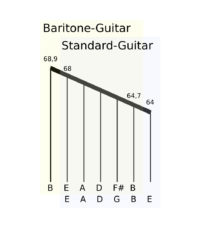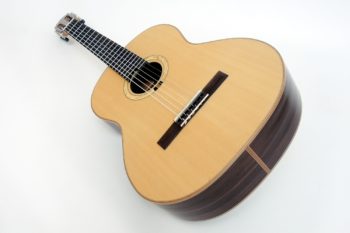Baritone - What For?

The baritone guitar is the link between guitar and bass. It was designed for guitarists who would like to have a more bassy sound, but still want to stick with the guitar as their instrument of choice. Usually we find the string combination BEADF#B on the baritone guitar.
 Strings and Intonation
Strings and Intonation
In order to achieve an even string tension across the entire width of the fingerboard and thus a homogeneous fretting feel, low strings are designed to be thicker than high strings. However, very thick strings tend to behave very stiffly at the ends, causing them to vibrate properly only towards the middle. Since intonation suffers a great deal from this behavior, the scale length of baritone guitars is usually adjusted to a length between 68 and 72 cm.
Baritone Body
The body of the baritone guitar also undergoes changes compared to a "normal" guitar. It is slightly enlarged to support the low frequencies. It is important not only to change the depth, but also the width and length parameters. Omitting these parameters can result in a hollow, colorless sound in the upper frequency range, which of course should not be neglected.
 Several components lead to an increased string tension on the baritone guitar. First of all, there are the thicker strings and the longer scale length, but the larger body plays its part as well. It also increases the surface of the top. The larger the surface, however, the stronger the leverage effect of the string tension. Reason enough to give the top of a baritone guitar a stronger bracing.
Several components lead to an increased string tension on the baritone guitar. First of all, there are the thicker strings and the longer scale length, but the larger body plays its part as well. It also increases the surface of the top. The larger the surface, however, the stronger the leverage effect of the string tension. Reason enough to give the top of a baritone guitar a stronger bracing.
Fanned Frets
For baritone guitars, fanned frets are virtually predestined. With fanned frets, the scale length increases from the high strings towards the the low strings. Intonation problems caused by the baritone-typical construction are completely eliminated, as each string is given the exact length it needs.

